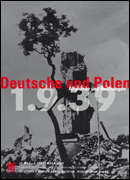


Exhibition | Oppression and Self-assertion | War and Occupation | Conflicts and Rapprochements
The Partitions of Poland
| Struggle for Freedom and Enthusiasm for Poland
Intensification of the "Germanization policy"
| World War One and the Reconstitution of Poland
Border Conflicts and Demonization
| A Calculated Rapprochement
Inspired by other European revolutionary movements, Warsaw revolted against Russian rule in November 1830, and some of the rebels fled to Prussia after the revolt was crushed by the Russian army. Poland's struggle for freedom attracted a great deal of solidarity in Germany, especially in liberal circles.
Nevertheless, Prussian King Friedrich Wilhelm III supported the "Germanization" of Prussia's Polish territories.
When a Polish plot to overthrow Prussian rule was discovered in 1846, many Germans once again expressed sympathy with the Polish cause, and King Friedrich Wilhelm IV felt obliged to grant an amnesty to the condemned Polish freedom fighters in March 1848.
The debate in the Frankfurt Parliament concerning Poland's future demonstrated that, by summer of 1848, the majority of the German public no longer supported the Polish cause.
